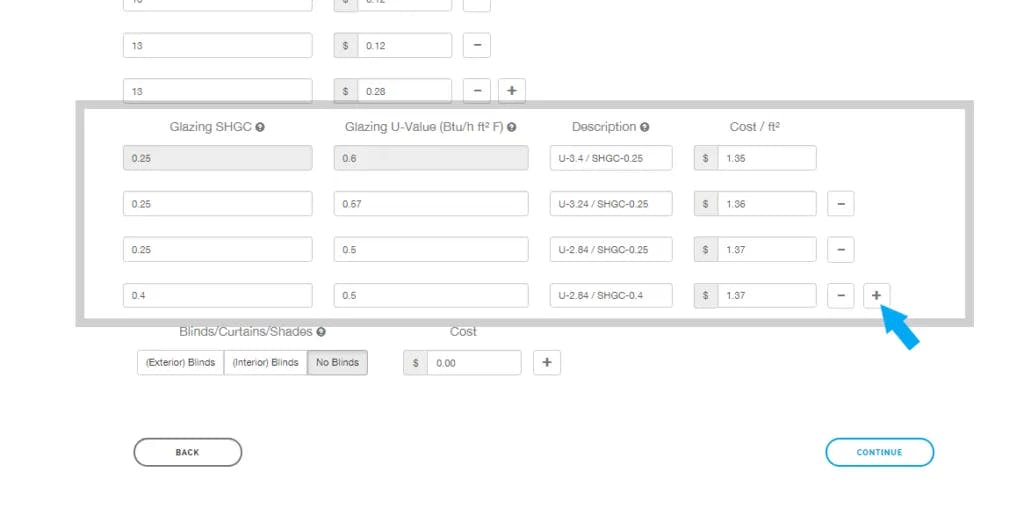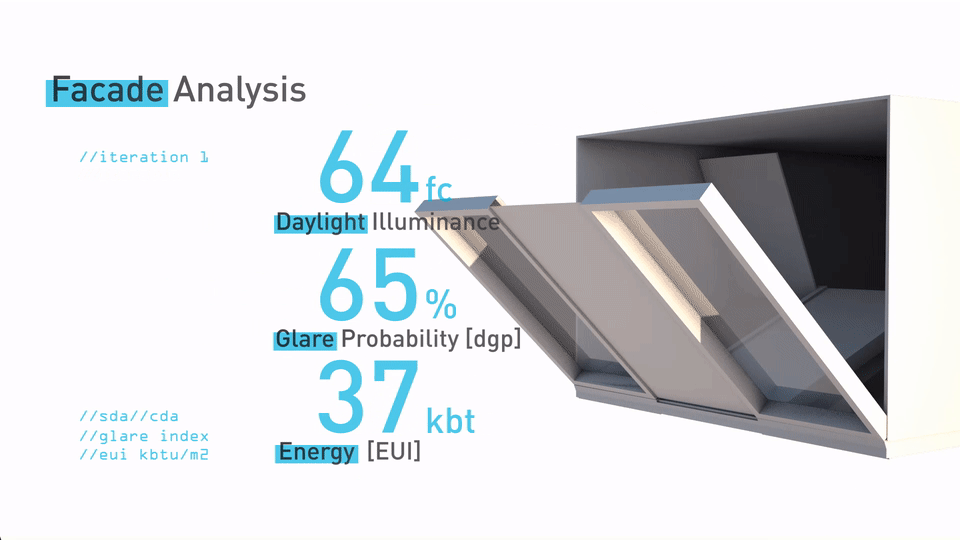
Installing glass over openings, like windows and doors, is known as glazing. In sustainable building design, glazing is an essential aspect of structures as it helps to let daylight and solar heat into the space.
Common types of glazing that are used in architectural applications include clear and tinted float glass, tempered glass, and laminated glass as well as a variety of coated glasses, all of which can be glazed singly or as double, or even triple, glazing units.
Thermal Conductance (U- Value) of Glazing
Thermal conductance is defined as the measure of the ability of a material to transfer the heat per unit time through the unit area of the material. U-value quantifies the rate of heat flow due to conduction, convection and radiation caused by the temperature difference between the maintained space and outside environment. The unit of U-value in IP system is BTU/hr.ft2.°F and in SI system is Watts/m2.K.
The range for U-values generally varies from 0.2 to 1.3 in IP system where the lower value is considered superior as it indicates the limited loss of heat from the space. The R-Value indicates the resistance to the heat transfer and can be simply calculated by taking the reciprocal of U-value.
In the hot or warm climates (ASHRAE climate zones 1,2,3 and 4), the Solar Heat Gain Coefficient (SHGC) has precedence over U-value as the heat coming in is considerably higher than the heat transferred out of the space. On the other hand, the cold climates (ASHRAE climate zones 5,6,7 and 8) benefit from having a lower U-Value for windows as it is really important to retain the heat inside the maintained space from flowing outside.
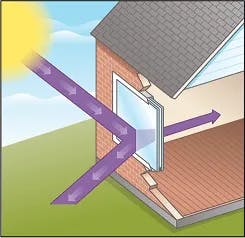
Visible Light Transmittance (VT) and Glazing
The visible transmittance is the percentage of the visible solar light that passes through the glazing is called Visible Transmittance (VT). Therefore, an opening without glazing in building envelope would have 100% VT. Also, opaque wall has 0% VT since light cannot pass through it. The common values for Visible Transmittance may vary from 35-80 % for tinted and coated windows. Un-tinted windows may have the Visible Transmittance as high as 90%.
As the Visible Transmittance value increases the amount of daylight into the space also increases. In hot/warm climate zones (ASHRAE 1,2,3 and 4), the VT value should be chosen considering the fact that the higher VT value leads to glare and overheating of the space. And for the cold climates (ASHRAE Zones 5,6,7 and 8), the higher values for VT are desired as it will help to reduce the heating load of the system.
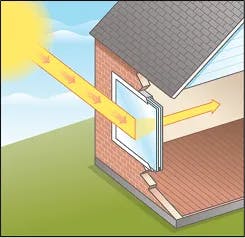
Air Leakage (AL) and Glazing
The air leakage is the amount of air in cubic feet per minute that passes through the window or door. The typical range for air leakage values is between 0.1 to 0.3 where 0.1 is the least amount of air that passes through the window. While performing the air change calculations, the air leakage should be considered because it has a direct impact on the energy demand of the building.
It is important to consider that the air leakage affects the indoor air quality as it introduces pollutants, dirt and microbes to the building. Therefore, the minimum value for air leakage is highly desired. Air Leakage (AL) is an optional rating and sometimes the manufacturers may decide not to show it on their product labels.
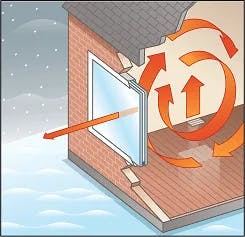
Solar Heat Gain Coefficient (SHGC)
The Solar Heat Gain Coefficient (SHGC) is the fraction of the total incident sunlight that is being transmitted through the glazing material. SHGC is a dimensionless number that ranges between 0 and
1. The glazing with 0 SHGC value indicates total resistance to the heat and 1 SHGC value indicates that total heat from sunlight passes through the glazing into the maintained space.
Typical values for glazing SHGC varies from 0.2 to 0.9 depending upon the type of glass used, tinting, coating type, number of panes, etc. For the hot/warm climate zones (ASHRAE zones 1,2,3 and 4),
selecting higher SHGC for glazing results in higher cooling loads for the building. Therefore, a low SHGC value typically less than 0.4 is desired for hot climate zones (where cooling loads are significantly
higher).
For the cold climate zones (ASHRAE zones 5,6,7 and 8), the higher SHGC values for glazing are preferred as they permit more solar heat into the space. Integrating this passive solar heating strategy helps to reduce the heating loads for the overall system.
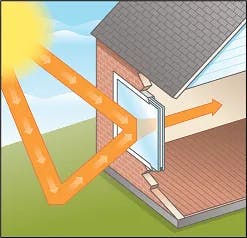
Shading Coefficient (SC)
Shading Coefficient (SC) is the ratio of radiant heat gain through the proposed glazing relative to the 1/8-inches thick single clear glass. Shading Coefficient is an indicator of how well the glass is thermally shading the interior where there is direct sunlight on the glazing area. Shading Coefficient value is a dimensionless number whose value varies between 0 and 1.
The main difference between Shading Coefficient (SC) and Solar Heat Gain Coefficient SHGC) is that the SC is based only upon the glass portion of the glazing assembly which means it does not consider the frame heat flow.
For the hot/warm climate zones (ASHRAE zones 1,2,3 and 4), the lower values of Shading Coefficient are preferred for the glazing as it helps to reduce the cooling load of the building. And for the cold climate zones (ASHRAE zones 5,6,7 and 8), the higher values of Shading Coefficient are preferred because it helps to passively heat up the space reducing the heating load of the system.
Conversion between Solar Heat Gain Coefficient and Shading Coefficient
The Solar Heat Gain Coefficient (SHGC) term is relatively new and manufacturers are trying to replace Shading Coefficient with Solar Heat Gain Coefficient values. The Shading Coefficient is still useful in practice to compare the glass types. Shading Coefficient is also useful to indicate the effects of external of internal solar controls. If the Shading Coefficient value needs to be converted to Solar Heat Gain Coefficient, it simply needs to be multiplied by 0.87 as shown in the following formula:
Solar Heat Gain Coefficient (SHGC) = Shading Coefficient (SC) * 0.87
cove.tool allows users to parametrically test multiple different glass types for their impact on energy and cost. The input values for Glazing U-Value and SHGC can be edited via engineering inputs tab or the parametric optimization where the users can define multiple different glass types to be test together.
